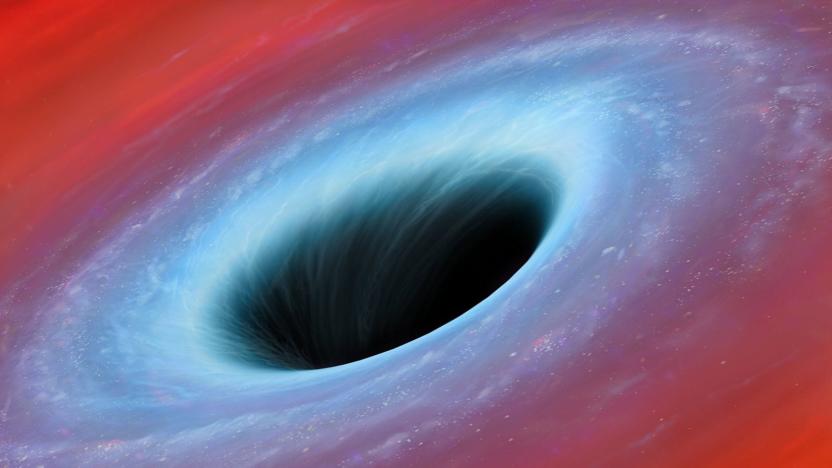EventHorizonTelescope
Latest

Remembering the first 'photo' of a black hole
Black holes are so outlandish that the scientists who first thought them up figured they couldn't possibly exist in reality. They form from massive, collapsed stars and are so dense that nothing can escape their gravitational pull, including light. Black holes mess with spacetime so badly that scientists have long wondered: How do these things look, exactly? We may be on the cusp of seeing one thanks to the Event Horizon Telescope, but back in 1979, Jean-Pierre Luminet created the first "image" using nothing but an early computer, lots of math and India ink.

Astronomers may have taken the first photo of a black hole
The Event Horizon Telescope project's astronomers can now breathe a sigh of relief. They finally managed to observe Sagittarius A* for five sleepless nights after switching on the array on April 4th. In other words, the team might have taken the first picture of a black hole ever. There were nights when they had to stop their observations due to bad weather or something going wrong with their system, but they ultimately wrapped up on April 11th, 11:22 AM ET.

Event Horizon Telescope will soon take the first black hole photo
The Event Horizon Telescope (EHT) is finally ready to take a picture of Sagittarius A*. From April 5th to 14th this year, the virtual telescope that's been in the making for the past two decades will peer into the supermassive black hole in the center of our galaxy. EHT is actually an array of radio telescopes located in different countries around the globe, including the Atacama Large Millimeter/submillimeter Array in Chile.

New algorithm may lead to a picture of an actual black hole
MIT grad student Katie Bouman and her team have developed an algorithm that could finally show us a photo of an actual black hole. See, all the black hole "photos" you've seen thus far, including the one above, are merely artist interpretations depicting what we think they look like. In order to capture, say, a picture of the supermassive black hole in the center of our own galaxy, we'll need an enormous telescope with a diameter almost as big as our planet. Since it's impossible to build something that massive, Bouman's algorithm called Continuous High-resolution Image Reconstruction using Patch priors or CHIRP stitches data gathered by the Event Horizon Telescope array.

We could finally see an event horizon in 2017
Event horizons remain shrouded in mystery (and is depicted as the gateway to hell by a certain sci-fi horror flick) for good reason. Since they don't emit or reflect light, they're notoriously hard to photograph. The good news is that the Event Horizons Telescope's development is on track and could give us a peek into the heart of Milky Way's black hole called Sagittarius A* as soon as early 2017. Team member Feryal Ozel told BBC News during an astronomy event in Florida that the project is "almost there."

New telescopes could uncover a wormhole in our own galaxy
If you're ever unlucky enough to be sucked towards a super-dense black hole, you'll soon arrive at something called the event horizon -- from which nothing can escape, including light. Thanks to a new "earth-sized" radio telescope, scientists may soon know whether you'll become stretched out infinitely ("spaghettified") or merely vaporized. Knowing which of those gory fates is correct will help astronomers in their quest to unify Einstein's theories involving planetary motion with sub-atomic quantum mechanics. Even more intriguingly, a separate telescope experiment called GRAVITY in Northern Chile may soon tell us if the Sagitarius 'A' black hole at the center of our own galaxy is actually a wormhole instead.

